A close-up look at the Mini Vision concept

It's time for a new Mini, the third iteration of the reborn classic that goes from strength to strength as it fragments into myriad models and variants. The new car is set to be unveiled concurrently at the Tokyo and Los Angeles motor shows in November, so for now we have to settle on a virtual preview of its upcoming concept car, the Mini Vision.
It is hard to make a definitive judgment based on its digital format, but on first glimpse the new car appears more compact, a little more chiselled and certainly less heavy than the outgoing model. Sharper, more defined exterior lines help shed visual weight so the car feels less cutesy. 'We are introducing a sharper sculptural language,' confirms head of design Anders Warming. 'It represents our next era of form language,' he told Wallpaper* during the event held at Mini's design studio in Munich.
Most striking is the new double grille design. Warming notes that it 'reverts back to where we came from', and it's certainly closer to the original 1960s Sir Alec Issigonis car in how the top grille integrates with the bumper and fog lights. The curvature on the bonnet is also a direct reference to the former, where a sharp raised line intersected the bonnet.
Warming and his team have had the most fun with the interior. In typical Mini fashion, there's self-conscious quirkiness in the shape of Union Jack cup holders and disco lights, but overall the cabin is less cluttered. The familiar oversized circular central display unit remains the dominant feature, but it's now fully digital and housing all the connectivity aspects. Meanwhile, all that relates to physical driving appears on the steering column, and the floating centre console houses the mechanical dials for a 'good balance between mechanical and digital,' says Warming.
A new feature is the stretch fabric element in the doors - here criss-crossed as the Union Jack - that can be modified to act as cup holder, storage unit and so on. It replaces the usual plastic elements, is light and therefore a good way of shedding weight. The cloth concept is intriguing and it would be interesting to see if the team will push this forward for development.
A switch allows you to change the lighting, colours and atmosphere inside the car. Hit the sport button, for instance, and the whole space lights up in red - the display switches change too to signify that the steering, throttle and exhaust are now in their sportiest settings. This will also change the display unit to a classic, analogue-style view or 3D look. Finally, the footwell can be activated for a series of 'Mini disco' patterns.
According to BMW Group design director Adrian Van Hooydonk, the differentiation in the Mini line caters for increasingly different drivers. 'This wouldn't mean the Countryman for instance becomes sober, but there would be a different feel especially with interior colour and trim treatment,' he told us.
BMW is also making sure that tech sharing lowers costs. 'Now that we share the new front-wheel drive platform with BMW there is no longer the pressure to expand,' Van Hooydonk says. 'That gives Mini more time and space to consider its next step.'
Mini Vision isn't quite back to basics, but it bodes well for a more harmonious, honed and attractive basis for Mini to weave its magic in the years to come.
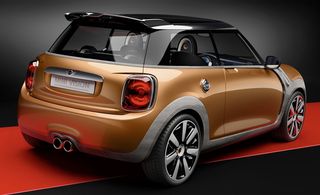
At first glance the new car appears more compact, a little more chiselled and certainly less heavy than the outgoing model. Sharper, more defined exterior lines help shed visual weight so the car feels less cutesy
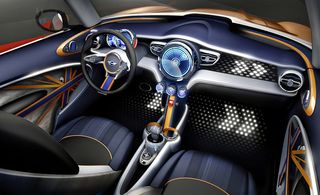
In typical Mini fashion, there's self-conscious quirkiness in the shape of Union Jack motifs and disco lights, but overall the cabin is less cluttered than previous models. The familiar oversized circular central display unit remains the dominant feature, but it's now fully digital and houses all the connectivity aspects
Wallpaper* Newsletter
Receive our daily digest of inspiration, escapism and design stories from around the world direct to your inbox
-
 Ikea introduces its first gaming furniture collection
Ikea introduces its first gaming furniture collectionBrännboll is the first Ikea gaming furniture collection, unveiled during Milan Design Week 2024 and designed to swiftly transform a domestic space into a gamer’s paradise
By Jasper Spires Published
-
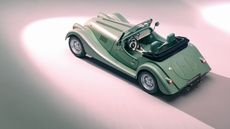 Morgan take their classic roadster and give it subtle but significant tweaks for 2024
Morgan take their classic roadster and give it subtle but significant tweaks for 2024New details and features give the compulsive Morgan Plus Four an even more pared back silhouette and driving ability
By Jonathan Bell Published
-
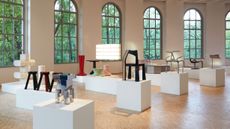 Wallpaper* Class of '24 exhibition now open at Triennale Milano
Wallpaper* Class of '24 exhibition now open at Triennale MilanoWallpaper* Class of '24 exhibition at Triennale spotlights international emerging talent in furniture and product design, with the support of AHEC and SNOW (until 21 April 2024)
By Rosa Bertoli Published
-
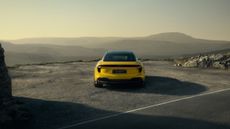 24 transportation design innovations for 2024
24 transportation design innovations for 2024From electric cars to new airports and sports boats, here’s a non-exhaustive list of 24 of the most interesting transportation design innovations to expect in the coming year
By Jonathan Bell Published
-
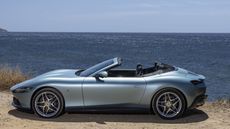 Year in review: the top 10 cars of 2023, as selected by Wallpaper’s Jonathan Bell
Year in review: the top 10 cars of 2023, as selected by Wallpaper’s Jonathan BellWhat were the best four-wheeled offerings of 2023? Transport editor Jonathan Bell takes us through the year’s most intriguing automobiles
By Jonathan Bell Published
-
 David Brown Automotive transforms original Mini into a high-end, high-spec EV
David Brown Automotive transforms original Mini into a high-end, high-spec EVThe DBA Mini eMastered: luxury motoring is rarely so altruistic and joyful
By Jonathan Bell Published
-
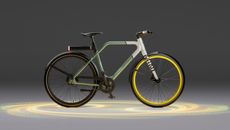 Mini E-Bike 1, with Angell Mobility, is the carmaker’s first electric two-wheeler
Mini E-Bike 1, with Angell Mobility, is the carmaker’s first electric two-wheelerThe Mini E-Bike 1 opens up a new chapter for Mini, a collaboration that adds another mobility option to its freshly electrified range
By Jonathan Bell Published
-
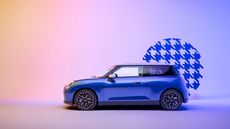 Two new electric Minis bring back the playful spirit of the original
Two new electric Minis bring back the playful spirit of the originalThe new Mini Countryman and Mini Cooper give the modern icon a cleaner, minimal appearance and bolster the interior tech and trim
By Jonathan Bell Published
-
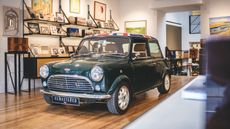 Coronation-edition Mini Remastered by DBA flies the flag in London’s Linley showroom
Coronation-edition Mini Remastered by DBA flies the flag in London’s Linley showroomA pocket-sized piece of coronation memorabilia, the ultimate Mini Remastered by David Brown Automotive is showcased by Linley
By Jonathan Bell Published
-
 Mini Recharged: Sir Paul Smith’s contemporary cut for a classic
Mini Recharged: Sir Paul Smith’s contemporary cut for a classicReimagining his 1998 take on the small car with a big following, Sir Paul Smith tailors the stripped-back 2022 Mini Recharged
By Jonathan Bell Last updated
-
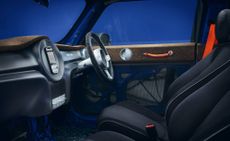 Paul Smith takes the new electric Mini for a spin
Paul Smith takes the new electric Mini for a spinPaul Smith fashions a one-off model that reveals the the new electric Mini's inner workings
By Deyan Sudjic Last updated